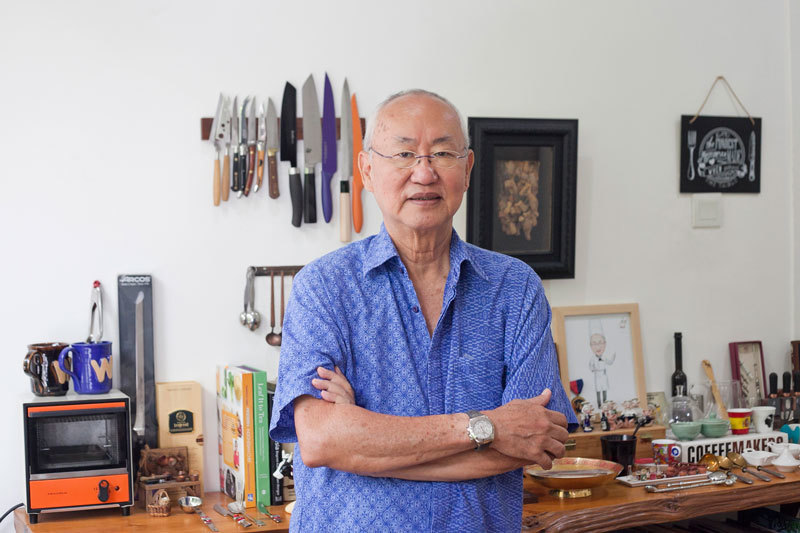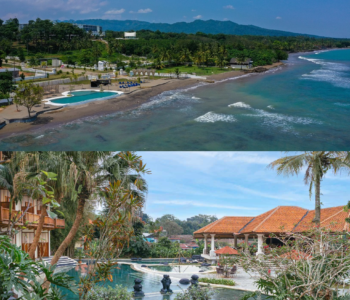Chef and food expert William W. Wongso is a very busy man. In between his tours around Indonesia and the world, NOW! Jakarta had the opportunity to talk to him about the culinary scene both here and overseas.

Can you share your insights on Betawi cuisine? Why isn’t it more popular than Padang Food, even in Jakarta?
Jakarta or Betawi food is the under dog. Why? People who live in Jakarta are only aware of specific types of dishes because food stalls here specialise in only on dish. For example these stalls just sell Soto Betawi, Asinan, Pecak Pucung Gabus or Soto Tangkar, It’s different at Padang restaurants which serve many kinds of typical food from the region.
So, if you eat in an Indonesian restaurant, Betawi food is only part of Nusantara cuisine. Until now, I haven’t seen a Betawi restaurant that provides different kinds of food from this region. Like Soto Ma’ruf restaurant, for decades, it just sells soto.
How did this happen?
Probably because Jakarta is a melting pot of many cultures. The community wasn’t introduced to Betawi food before. Along the way, the elders only served the original version only in the certain cultural ceremonies, and not outside the community.
As long as Jakarta is a melting pot where people come to the city and bombard it with their own culture, Betawi food will remain sporadic as a ‘singular’ comfort food. People may not know it in its entireity. For example, the original Asinan Betawi uses tekim leaves, but most people don’t know that.
It appears that Indonesian restaurants are everywhere now and it is becoming a trend. What do you think about the phenomenon?
It’s booming but is still superficial, which means it’s only good for now because it is in demand. The demand is increasing but it’s not in line with the professional expertise of the chef. The ‘master of Indonesian food’ is rare, because there isn’t specific training and Indonesia is vast and there is no institution that specialises in it.
We don’t have an Indonesian culinary centre where one can find information and literature about Indonesia’s culinary heritage and attend workshops on it. So, the result is that many people learn by themselves, and from their own perspective.
What about food trends overseas?
The cycle is ‘back to basics’. People are tired of eating modified food, or fusion food. In the end, people just want to eat the food they’re familiar with, food that they find delicious, or go on an adventure to find authentic food. It has happened in France.Because the economy is in not good, the number of Michelin-starred restaurants hasn’t gone up.
There is a new trend called “bistronomy” where many well-known chefs create a restaurant in bistro plus style. It not too expensive and serves good food. There is no need for exclusive service like in fine dining restaurants, with the ratio one waiter for maximum four guests.
Why is it that Indonesian restaurants are not well-established overseas?
Because they only think about investment. Food isn’t about investment. Do you know why the cuisine of Vietnam, which became independent after us, is more popular than our food? Indonesian people migrated individually. It’s not because of war or extraordinary disasters.
Vietnamese migrated abroad because of war, and in groups, they made little “villages” there and they kept eating their own food whether local people liked it or not. They kept opening restaurants. While Indonesians opened restaurants, it was for business purposes, and they adjusted the taste to suit the local palate. Or they added some elements like in China or other regions. Anyway, who are the chefs? We don’t have many chefs specialising in Indonesian food.
It’s the same thing with Chinese food. Chinese people migrated from their country, [maybe] because it was overpopulated. They spread out and built their own restaurants with the original Cantonese flavours and because they were well-established they opened more restaurants that featured specific, regional cuisine. Just see, in the next one or two years, there will be many Syrian restaurants in Germany because there so many refugees from that country in Germany. We have to be realistic.
So, what is the strategic way to promote Indonesian cuisine abroad?
Nowadays, we can’t introduce and promote our culinary with only words “delicious or very good” to describe the taste. It has to be done with a cultural approach. I have been a ‘cultural diplomat’ for Indonesian cuisine in many countries. We have to understand first the situation.
For example, when I went to Sweden I was introduced to Surströmming fish that most Swedish people have given up on because it has a very strong smell. I was asked to cook it in the Indonesian style. I fried that fish and made it into crunchy bits for fried rice with special seasoning from Indonesia, and they liked it.
When I was in Namibia, I knew they love their meat. So I brought the typical Indonesian seasonings, and used them to cook beef and I made rawon—beef black soup— they tasted it, they liked it and they learned Indonesian taste. We have to do interesting things like this.
You are also in the business of selling rendang, in addition to promoting it. How do describe this dish correctly?
It’s definitely not just “spicy beef curry”. it’s “caramelised spicy beef curry”. We have to highlight the process of caramelisation because it has to cook for several hours until all the spices and seasonings are strong and concentrated and the chillies have become pepper.
If it only yellow or orange, it’s not rendang but just beef curry. We have to know the principle of making rendang. Most people don’t want spend time cooking it properly to make it authentic. .
Can you tell us about Aku Cinta Masakan Indonesia (ACMI)?
ACMI (I Love Indonesian Cuisine) came about because there was no movement that really tried to stimulate interest and willingness to cook, even though I know there are many housewives who cook home food but it’s just basic. Maybe we used to have a grandmother who cooked Indonesian dishes from our home-region and we were familiar with that food. But nowadays, it’s difficult to find home assistants who are good at cooking.
ACMI activities began with potluck meals. Participants brought dishes which followed a certain theme. For example, one of the themes was tempe and we asked participants to cook various dishes using it as a basic ingredient. We also went to traditional markets and we’re now developing culinary tours in cooperation with tour operators, to Jailolo for example, and some countries. The requests for the culinary tours are increasing because they are well curated.
_______
This article is originally from paper. Read NOW!Jakarta Magazine June 2018 issue “City of the Future?”. Available at selected bookstore or SUBSCRIBE here.







